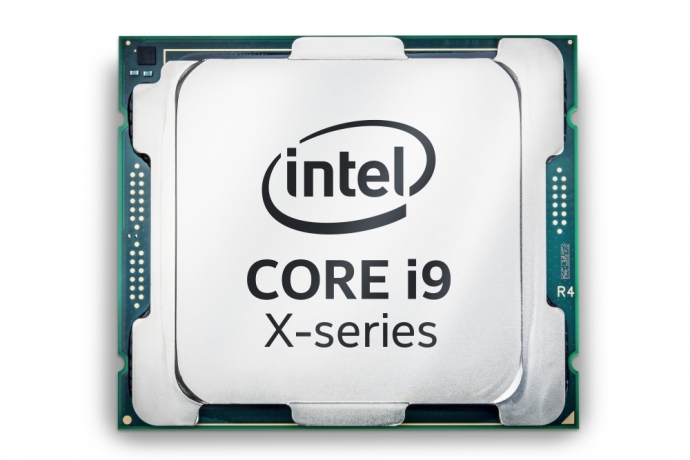Intel’s Future Includes Powerful PCs and Data-Driven Life
Intel’s Gregory Bryant showed off Intel’s plans for the future of data driven computing and powerful personal computers.
Gregory Bryant, corporate vice president and general manager of the Client Computing Group at Intel, gave the opening keynote at Computex in Taipei. His focus? The data-driven future. That included the smart home, smart cities, modular computing and the future of both laptop and desktop chips.
Data, Bryant said, was behind the next chapter of the technological revolution.

“It’s going to fundamentally change the way we live, the way we work and the way we interact,” he said.
He was talking about collecting, analyzing and figuring out how to use data. By 2025, he says, 80 billion devices will be connected to the internet -- not just phones and PCs, but autonomous cars, drones and IoT devices. By 2020, each person will produce 1.5GB of data per day. A car may produce 4TB, and a factory would reach 1 petabyte. In fact, he said Intel no longer considers itself a PC company anymore, but a data company.
Bryant started by talking about the cloud and data centers. Customers and organizations need to bridge the public and private clouds, he said. For that, he announced an Intel Xeon Processor Scalable Family platform, with boosts in performance and efficiency. Additionally, Intel will release its second generation of 3D Nand SSDs for data centers.
MORE: Which Laptop CPU is Right for You?
Smart Homes - and Cities
He moved on quickly to the Internet of Things, “where you can see the greatest impact that technology and data can have on delivering more personalized and more immersive experiences,” he said.
Sign up to get the BEST of Tom's Guide direct to your inbox.
Get instant access to breaking news, the hottest reviews, great deals and helpful tips.
For homes, he focused on modular computing. Intel today is launching the Intel Compute Card, which we first saw at CES. It keeps smart devices from becoming obsolete by separating the computer from the rest of a device. A representative showed off a dock that the Card plugs into to make a full PC. An all-in-one from LG also includes the Compute Card, as did an education laptop demoed on stage. They showed one card transferring from a laptop to a smart whiteboard to a desktop, moving a students' data all of the way.
And that’s not just homes; it’s the smart cities of the future.
He discussed smart city kiosks, with emergency alerts, Wi-Fi and more, that are replacing aging infrastructures. He showed off an oversized demo version called CityBeacon, which uses a small form-factor Intel PC to show off multimedia content, measure seismic devices and measure other data. Data or footage can be sent to the right government agency or police department in the case of an emergency.
Still Working on the PC, and Now VR
Of course, Intel hasn’t forgotten the PC. It showed off new and recent devices including Lenovo’s Yoga 720 with an H-series processor, the Huawei Matebook X with a fanless design, one of MSI’s VR-ready desktops and VR backpack.
Bryant stopped the show to show off Acer’s Predator Triton, which is super thin and launched today.
Intel’s Wi-Gig technology using HTC Vive and the DisplayLink XR codec will make VR wireless. We saw an early version at CES, and it looked even better on stage. It will come in early 2018.
Bryant dedicated a whole section to Asus, local to Computex’s home city of Taipei. Asus chairmen Jonney Shih took to the stage to show off Asus’s new laptops, the ZenBook Flip S and the Asus ROG Zephyrus. He also announced a new 2-in-1 with LTE inside, codenamed Kukuna, which will feature an Intel Core CPU and Intel LTE. Bryant calls this the “always connected PC.” Other partners include HP, Asus, Lenovo, Dell, Samsung and Acer.
Bryant turned his focus to performance on PCs, with Intel Optane memory. He loaded a game of Black Desert Online with two machines, one with Optane, one without. The machine with Optane loaded it twenty-eight seconds faster than the one without it. An Optane based SSD will be available later this year.

Finally, Bryant focused on processing power, discussing the 8th-generation series of Core i CPUs. Bryant claims it squeezes out more than 30 percent of performance over Kaby Lake chips. Bryant said it will release by the holiday season this year.
Intel is also developing purpose-built products for creators and gamers. Intel revealed Intel’s next-gen enthusiast platform, Intel Core X-series for desktops. It will scale from 4 to 18 cores and is meant for intensive processes like virtual reality streaming. They showed a demo with a user on a green screen streaming herself in a VR game over OBS, live on Twitch. They also did a demo showing how the power works for game creators making games in VR.
The Core i7 is no longer the pinnacle of performance. The Core X series will go up to Core i9 to represent the highest performing processor for content creation, gaming and VR.
Bryant said this “virtuous cycle” of growth will allow for more in the future, but as it seems, Intel has a ton on its plate right now.
Andrew E. Freedman is an editor at Tom's Hardware focusing on laptops, desktops and gaming as well as keeping up with the latest news. He holds a M.S. in Journalism (Digital Media) from Columbia University. A lover of all things gaming and tech, his previous work has shown up in Kotaku, PCMag, Complex, Tom's Guide and Laptop Mag among others.

